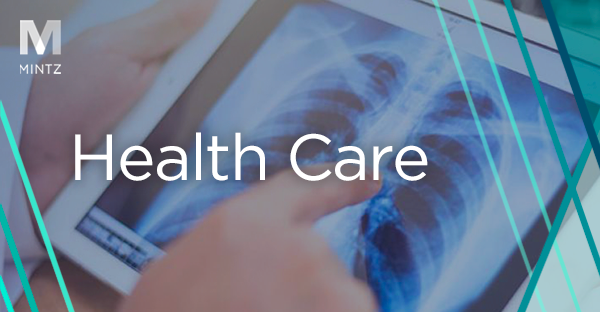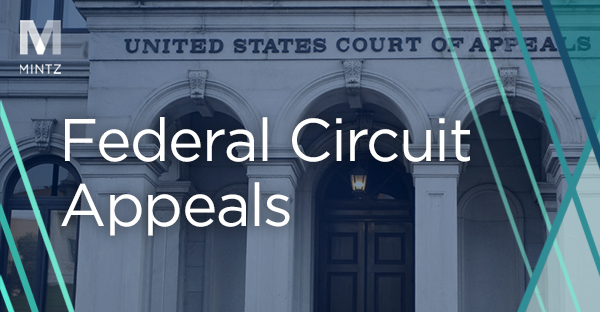
Life Sciences
Viewpoints
Filter by:
Written Description Requirement Challenges: Federal Circuit Decision Sheds Light on How Expert Testimony Can Help
January 21, 2022 | Blog | By Brad M Scheller, Meena Seralathan
Earlier this month, in Novartis Pharms. Corp., Inc. v. Accord Healthcare, Inc., et al., No. 2021-1070, the Federal Circuit issued a helpful decision concerning the not-often-discussed written description requirement. The panel specifically addressed whether sufficient written description can exist for claim limitations that are not explicitly or directly disclosed in the specification (including negative claim limitations). This new ruling provides patent owners with a useful guide for successfully navigating similar written description challenges in patent infringement cases. For example, Patent Owners seeking to combat written description requirement challenges should proffer expert witnesses who can clearly articulate how they understand the patent description in relation to the claims and what portions of that description support the same.
Read more
Life Sciences CEO Interview: Joe Payne, President and CEO of Arcturus Therapeutics
November 1, 2021 | Blog
Joe Payne, CEO of Arcturus Therapeutics, discusses his company’s focus on developing next-generation mRNA vaccines and therapies, his current areas of focus as head of the company, the importance of moving forward through the pandemic, and the most frequently asked question he gets about the company.
Read more
Coverage of FDA’s AI/ML Medical Devices Workshop - Part 3: A Summary of the Panel Discussions
October 20, 2021 | Blog | By Lara Compton, Benjamin Zegarelli
In the weeks leading up to FDA’s October 14, 2021 Transparency of AI/ML Enabled Medical Devices Workshop (Workshop) we took a brief look at the history of FDA’s regulation of medical device software and the agency’s more recent efforts in regulating digital health. In this post, we will provide an overview of the topics discussed at the Workshop and our impressions of the agency’s likely next steps.
Read more
Coverage of FDA’s AI/ML Medical Devices Workshop - Part 2: FDA’s Recent Digital Health Initiatives
October 12, 2021 | Blog | By Benjamin Zegarelli, Lara Compton
In our last post, we took a brief look back through history at FDA’s approach to regulating medical device software and found that there is little distinction from the agency’s approach to hardware devices. Recently, however, FDA has announced several digital health initiatives aimed at improving the agency’s resources and policies governing software and data systems (including its own internal data systems) and changing the way the agency handles pre-market reviews of and compliance activities for software as a medical device (SaMD) and SaMD manufacturers. In this post, we will review FDA’s digital health improvement highlights from the past few years and take a quick look at the agenda for the transparency of AI/ML-enabled medical devices workshop scheduled for October 14, 2021.
Read more
Coverage of FDA’s AI/ML Medical Devices Workshop - Part 1: The History of FDA Software Regulation
October 4, 2021 | Blog | By Benjamin Zegarelli, Lara Compton
In anticipation of FDA’s virtual public workshop on transparency of artificial intelligence/machine learning (AI/ML)-enabled medical devices scheduled for October 14, 2021, we will be posting a series detailing the history behind FDA’s regulation of software and then reporting our impressions of FDA’s presentations and statements from various attending stakeholders following meeting. In this part, we briefly summarize FDA’s traditional approach to regulating software and how software development quickly revealed the limitations of the original regulatory framework established in the 1976 Medical Device Amendments to the Federal Food, Drug, and Cosmetic Act (FD&C Act).
Read more
N.D. Ill. Finds that a Foreign Parent Corp. May be Sued Under BPCIA Without the U.S. Subsidiary that Signed and Filed aBLA
September 21, 2021 | Blog | By Thomas Wintner, Adam Samansky, Joe Rutkowski
In what appears to be a case of first impression, on August 23, 2021 U.S. District Judge John Z. Lee of the United States District Court for the Northern District of Illinois denied a biosimilar applicant’s motion to dismiss a patent infringement suit brought under the Biosimilar Price Competition and Innovation Act (“BPCIA”) against a foreign parent corporation that did not file or sign the relevant abbreviated Biologics License Application (“aBLA”).
Read more
When It Isn’t Better Late Than Never: ALJ Reins in on Redesigns First Disclosed in the Last Week of Fact Discovery
September 21, 2021 | Blog | By Michael Renaud, Adam Rizk, Matthew Karambelas, Tianyi Tan
In a recent IAM article, Levelling the playing field in ITC patent cases by identifying redesigns to a set deadline, we commented on best practices for ITC complainants to protect their interests against the nascent uptick of redesign submissions at the tail end of fact discovery. Although reasonable minds can differ as to whether the uptick in motion practice is coincidence or a more troubling sign that some respondents are using late redesign disclosures as a vehicle to put complainants at a disadvantage in fast-paced Section 337 proceedings, such late disclosures undoubtedly prejudice complainants’ ability to fully review and assess such disclosures for possible infringement.
Read more
PTAB statistics show interesting trends for Orange Book and biologic patents in AIA proceedings
August 24, 2021 | Blog | By Peter Cuomo, Joe Rutkowski, Nana Liu
The PTAB recently published the first update to its 2019 study of AIA trials involving petitions challenging Orange Book-listed patents and biologic patents through June 2021. Highlights of these pharmaceutical patent challenge statistics include, e.g., the number of these petitions filed, the number of instituted trials, and the trial outcomes since fiscal year 2013.
Read more
AI in Biotech and Synthetic Biology: What Can Be Protected? What Should Be Kept Secret?
August 11, 2021 | Blog | By Joshua Berk, Terri Shieh-Newton
Machine learning (ML), bioinformatics, artificial intelligence (AI), and other computational tools have become ubiquitous in the biotech and synthetic biology industries because such technology allows for rapid processing of a large amount of complex data to produce advancements in therapeutics and diagnostics. As the landscape becomes increasingly more competitive, it is important for companies, particularly in the aforementioned industries, to obtain patent protection for their AI-related technology.
Read more
Are You a Medical Device Servicer or Remanufacturer? FDA’s New Guidance May Help…Or Not
July 21, 2021 | Blog | By Benjamin Zegarelli, Cody Keetch
On June 24, 2021, the Food and Drug Administration (FDA) issued the long-awaited Remanufacturing of Medical Devices Draft Guidance, which describes the agency’s current thinking on activities that meet the definition of remanufacturing and a process for determining whether an act done to an original equipment manufacturer’s (OEM’s) legally marketed finished device is considered remanufacturing (the “Draft Remanufacturing Guidance”).
Read more
FDA Reverses 11th Hour HHS Action to Exempt Certain Devices from 510(k) Premarket Requirement
April 20, 2021 | Blog | By Benjamin Zegarelli
On April 16, 2021, Food and Drug Administration (FDA) published twin notices in the Federal Register effectively reversing a move by the Trump administration Department of Health and Human Services (HHS) on January 15, 2021 purporting to exempt 91 medical device types from the premarket notification requirement under Section 510(k) of the Federal Food, Drug, and Cosmetic Act. HHS’s actions on January 15, signed by then-HHS Secretary Alex Azar, sought to make permanent FDA’s grant of temporary enforcement discretion for the 91 device types for the duration of the COVID-19 public health emergency.
Read more
FDA Issues New Guidance on Drug Naming
December 17, 2020 | Blog | By Karen K. Won
Last week, the Food and Drug Administration (“FDA”) issued a pair of Guidance for Industry documents outlining best practices for developing proprietary names (i.e. brand names) for prescription and nonprescription human drug products.
Read more
An Update on FDA’s Contribution to COVID-19 Diagnostic Testing
November 5, 2020 | Blog | By Joanne Hawana
Back in the early days of the COVID-19 pandemic, we published a post outlining the different kinds of diagnostic tests that were being marketed and the different roles of the two main federal regulators that oversee the quality of different subsets of tests. Since then, there have been some important policy developments affecting diagnostic and antibody testing. There also has been significant growth in the number of tests authorized by the Food and Drug Administration for point-of-care uses in various patient settings such as clinics, emergency departments, and physician offices. Read on for an update about these developments.
Read more
In Case You Missed It: The Influence of Bioethics in Research and Development
October 27, 2020 | Blog
As the COVID-19 pandemic continues to upend our daily lives, the promise of a vaccine offers hope that life may, in the not-too-distant future, return to some version of normalcy. The path to getting a safe, accessible vaccine to market, however, presents a variety of its own challenges. As we’ve been exploring in our Bioethics in a Pandemic blog series, the pandemic has presented a host of bioethics issues pertinent to the vaccine development and distribution process. Mintz's Bridgette Keller recently shared her insights into how bioethics can (and should!) influence research and development at the M2D2 Challenge Awards. A video of her presentation is now available to view online.
Read more
FDA’s Prescription Drug Advertising Enforcers Issue COVID-19-Related Warning Letter
October 5, 2020 | Blog | By Joanne Hawana
The U.S. Food and Drug Administration (FDA) recently announced what appears to be the first public warning made by the agency to a company promoting an approved prescription drug product for the unapproved use of treating COVID-19 symptoms. Although the regulatory action was announced in the FDA’s daily pandemic update on October 2, 2020, the warning letter issued by the Office of Prescription Drug Promotion (OPDP) is dated September 22, 2020. From our perspective, this public FDA action is notable for two distinct policy reasons.
Read more
Trump Signs Executive Orders Aimed at Tying Domestic Drug Prices to Foreign Prices
September 15, 2020 | Blog | By Theresa Carnegie
President Trump has followed through on his threat to pharmaceutical manufacturers, signing new executive orders on Sunday that take a preliminary step toward the President’s goal of tying domestic drug prices to the prices manufacturers charge in foreign countries. The “Executive Order on Lowering Drug Prices by Putting America First” follows a trio of drug pricing-related executive orders the administration issued this past July. At that time, President Trump also signed a different executive order with the same name, but withheld the order in an attempt to force pharmaceutical manufacturers to the negotiating table. The President warned manufacturers that if they did not propose alternatives to lower drug pricing within 30 days, his administration would take action to implement its previously-abandoned plan to peg U.S. drug prices to foreign prices. Sunday’s order follows weeks of negotiations between the White House and drug manufacturers that have apparently not resulted in any mutually-acceptable proposals for lowering American drug prices.
Read more
Sort It Out: Cell Sorting Method with Data Processing Steps Patent Eligible
August 11, 2020 | Blog | By Brad M Scheller
In XY, LLC v. Trans Ova Genetics, LC (Case 2019-1789, issued July 31, 2020), the Federal Circuit provided another example of a life sciences method claim avoiding patent ineligibility under the Alice framework at step one, altogether avoiding the “inventive concept” analysis under step two.
Read more
AbbVie’s Enforcement of its ‘Patent Thicket’ For Humira Under the BPCIA Does Not Provide Cognizable Basis for an Antitrust Violation
June 18, 2020 | Blog | By Rich Gervase, Joseph Miller, Tinny Song
In a recent decision in In Re Humira (Adalimumab) Antitrust Litigation), No. 19-cv-1873, Judge Shah of the Northern District of Illinois dismissed a consolidated class action complaint filed by U.S. purchasers of AbbVie Inc.’s blockbuster biologic drug Humira alleging that AbbVie had prevented manufacturers of competing biosimilar drugs (“biosimilars”) from entering the U.S. market in violation of federal and state antitrust laws.
Read more
COVID-19: Prioritized Patent Application Examination and Patents 4 Partnerships
May 15, 2020 | Blog | By Peter Corless
The United States Patent and Trademark Office (USPTO) has recently launched two new initiatives to support COVID-19 innovations: 1) a COVID-19 Prioritized Examination Pilot Program, and 2) Patents 4 Partnerships that provides a searchable forum to list COVID-19 related published applications and patents available for licensing.
Read more
Next Steps for 21st Century Cures 2.0
May 8, 2020 | Blog
On Monday, April 27, Representatives Diana DeGette (D-CO) and Fred Upton (R-MI) announced the next steps for 21st Century Cures 2.0 (Cures 2.0), legislation that will build on the original 21st Century Cures Act enacted in December 2016 (Cures 1.0). While Cures 1.0 aimed to speed up the process of bringing new treatments to market, Cures 2.0 is generally envisioned to emphasize public health and streamlined care delivery, particularly in light of the COVID-19 pandemic. Elements envisioned to be in Cures 2.0 were outlined in a recently published concept paper that we discuss in this post.
Read more
Explore Other Viewpoints:
- Antitrust
- Appellate
- Arbitration, Mediation & Alternate Dispute Resolution
- Artificial Intelligence
- Awards
- Bankruptcy & Restructuring
- California Land Use
- Class Action
- Complex Commercial Litigation
- Construction
- Consumer Product Safety
- Cross-Border Asset Recovery
- Debt Financing
- Direct Investing (M&A)
- Diversity
- EB-5 Financing
- Education & Nonprofits
- Employment
- Energy & Sustainability
- Environmental Enforcement Defense
- Environmental Law
- FDA Regulatory
- Federal Circuit Appeals
- Financial Institution Litigation
- Government Law
- Growth Equity
- Health Care
- Health Care Compliance, Fraud and Abuse, & Regulatory Counseling
- Health Care Enforcement & Investigations
- Health Care Transactions
- Health Information Privacy & Security
- IP Due Diligence
- IPRs & Other Post Grant Proceedings
- Immigration
- Insolvency & Creditor Rights Litigation
- Institutional Investor Class Action Recovery
- Insurance & Financial Services
- Insurance Consulting & Risk Management
- Insurance and Reinsurance Problem-Solving & Dispute Resolution
- Intellectual Property
- Investment Funds
- Israel
- Licensing & Technology Transactions
- Life Sciences
- Litigation & Investigations
- M&A Litigation
- ML Strategies
- Medicare, Medicaid and Commercial Coverage & Reimbursement
- Mergers & Acquisitions
- Patent Litigation
- Patent Prosecution & Strategic Counseling
- Pharmacy Benefits and PBM Contracting
- Portfolio Companies
- Privacy & Cybersecurity
- Private Client
- Private Equity
- Pro Bono
- Products Liability & Complex Tort
- Projects & Infrastructure
- Public Finance
- Real Estate Litigation
- Real Estate Transactions
- Real Estate, Construction & Infrastructure
- Retail & Consumer Products
- Securities & Capital Markets
- Securities Litigation
- Special Purpose Acquisition Company (SPACs)
- Sports & Entertainment
- Strategic IP Monetization & Licensing
- Tax
- Technology
- Technology, Communications & Media
- Technology, Communications & Media Litigation
- Trade Secrets
- Trademark & Copyright
- Trademark Litigation
- Value-Based Care
- Venture Capital & Emerging Companies
- White Collar Defense & Government Investigations
- Women's Health and Technology






